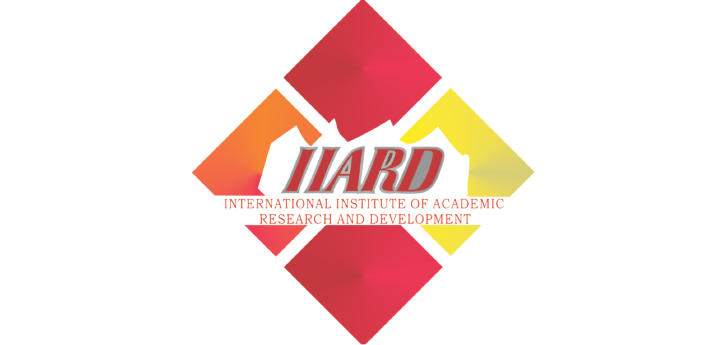Assessment of the Bacteriological and Physicochemical Quality of Water in Federal University Wukari, Taraba State
Daudu Emmanuel Solomon, Igbo Emmanuel Gabriel, Caleb Favour Rimamshong
Abstract
This study evaluated the physicochemical and bacteriological quality of borehole water in Federal University Wukari, Taraba State, Nigeria. Water samples were collected from five borehole locations within the university (Administrative Block, Cafeteria, Female Hostel, Staff School, and Male Hostel) and analyzed using standard microbiological and physicochemical methods. Bacteriological analysis revealed the presence of Escherichia coli, Staphylococcus aureus, Pseudomonas aeruginosa, and Bacillus subtilis. Total viable bacterial counts in all borehole samples were too numerous to count (TNTC), indicating heavy microbial contamination. Among the isolates, E. coli had the highest frequency of occurrence (38.1%), followed by S. aureus (33.3%), B. subtilis (19.0%), and P. aeruginosa (9.5%). Physicochemical parameters such as pH (6.9–8.1), turbidity (0.18–0.69 NTU), total dissolved solids (25.4–31.0 mg/L), conductivity (4.67– 5.33 S/m), and temperature (20.8–25.6 °C) were within WHO and SON permissible limits, whereas dissolved oxygen (0.41–0.55 mg/L) was significantly lower than recommended standards. The results indicate that although physicochemical qualities were largely acceptable, the high bacterial contamination renders the borehole water unsafe for direct human consumption. The study concludes that all borehole water sources in Federal University Wukari are microbiologically unfit for drinking without treatment. It is therefore recommended that regular monitoring, proper disinfection, and improved borehole construction and maintenance practices be adopted to safeguard public health within the university community.
Keywords
References
Orlu L.G.A, Imo State. In Igbozurike, U. M., Ijioma, M. A. and Onyenechere, E. C. (Eds.).
Rural water supply in Nigeria (pp. 69-77). Owerri, Nigeria: Cape Publishers International
Ltd.
Arora., B. and Arora., D. R. (2020). Practical Microbiology (2nd). New Delhi. CBS Publishers.
Aryal, S. (2018). Water quality analysis for most probable number. Journal of Microbiology,
12(6): 15.
Effiong, E. E. (2017). Assessment of drinking water quality in nursery and primary schools in
Obio Akpor LGA of Rivers State, Nigeria. (Unpublished master's thesis). Rivers State
University, Port Harcourt, Nigeria.
Islam, M. A., Ghosh, S., Alam, A. U., Islam, M. T., Kabir, M. R. and Sultana, M. (2021).
Assessment of physico-chemical and microbiological quality of drinking water in three
upazilas of Noakhali District in Bangladesh. Open Access Library Journal, 8: 7941.
Lapworth, D. J., MacDonald, A. M., Kebede, S., Owor, M., Charula, G., Fallas, H., Wilson, P.,
Ward, J. S. T., Lark, M., Okullo, J., Mwathuga, E., Banda, S., Nedaw, D., Jumbo, S., Banks,
E., Cook, P. and Casey, V. (2020). Drinking water quality from rural handpump-boreholes
in Africa. Environmental Research Letters, 15(6): 84-89.
Li, D. and Liu, S. (2019). Water Quality Monitoring and Management. Elsevier. 303-328.
Maikai, B. V. and Akubo, D. O. (2018). Coliform count and isolation of Escherichia coli in fresh
fruits and vegetables sold at retail outlets in Samaru, Kaduna State, Nigeria. Nigerian
Veterinary Journal, 39(4): 327-337.
Makonjo, W. and Calford, O. (2022). Assessment of groundwater quality using water quality index
from selected springs in Manga subcounty, Nyamira county, Kenya. The Scientific World
Journal, 3(1): 1-7.
Mukherjee, S., Sundberg, T., Sikdar, P. K. and Schutt, B. (2022). An integrated quantitative
analysis of urban water security of mega city in the Global South. Front water, 4(5): 2-12.
Murray, R. T., Goldstein, R. E. R., Maring, E. F., Pee, D. G., Aspinwall, K., Wilson, S. M. and
Sapkota, A. R. (2018). Prevalence of microbiological and chemical contaminants in private
drinking water wells in Maryland, USA. International Journal of Environmental Research
and Public Health, 15(8): 1-12.
Nayar, R. (2020). Assessment of water quality index and monitoring of pollution by physico-
chemical analysis in water bodies: A review. International Journal of Engineering
Research and Technology, 9(1): 6-17.
Nigerian Standard for Drinking Water Quality (2021). National Standard for Drinking Water
Quality, 1-22.
Onyango, A., Okoth, M., Kunyanga, C. and Aluwa B. (2018). Microbiological Quality and
Contamination Level of Water Sources in Isolo County in Kenya. Journal of
Environmental Public Health, 21(3). 21-39.
Pierce, G. and Gonzalez. A. (2017). Factors Contributing to public drinking water and health
perception across US Households. Water Policy, 19(1): 1-12.
Prescott, L. M., Harley, J. P. and Klein, D. A. (2018). Treatment of water. Microbiology (11th ed.,
pp. 1088). McGraw Hill Company.
Robertson, L., Chitanga, S. and Mukaratiwa, S. (2020). Food and Waterborne Parasites in Africa.
Threats and Opportunities. Food Waterborne Parasitology, 20:1-5.
Standard Organization of Nigeria. (2007). Nigerian standard for drinking water quality. Abuja,
Nigeria: SON publishing company, 15-33.
UNICEF and JMP (2017). Progress on household drinking water, sanitation, and hygiene 2000-
United Nations Children's Fund, New York, United States.
United Nations Development Programme (2017). Sustainable Development Goals. United Nations
Development Programme, Geneva, Switzerland.
World Health Organization. (2011). WHO guideline for drinking water quality. 4th edition,
Geneva. ISBN 9789241548151, NLM Classification: WA 675.
World Health Organization. (2021). Guidelines for drinking-water quality (4th ed.). World Health
Organization.

